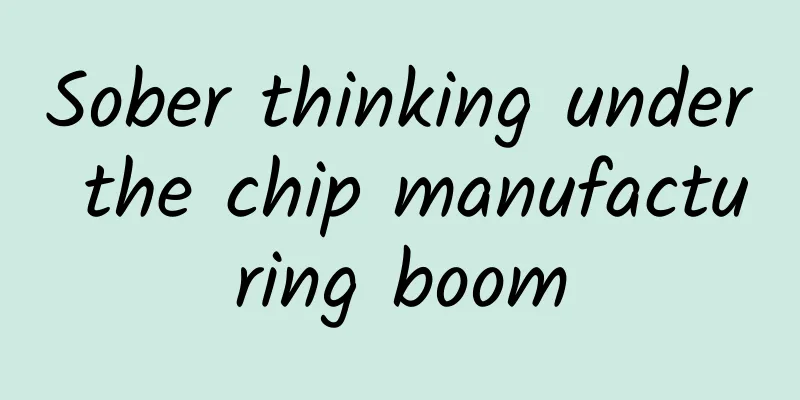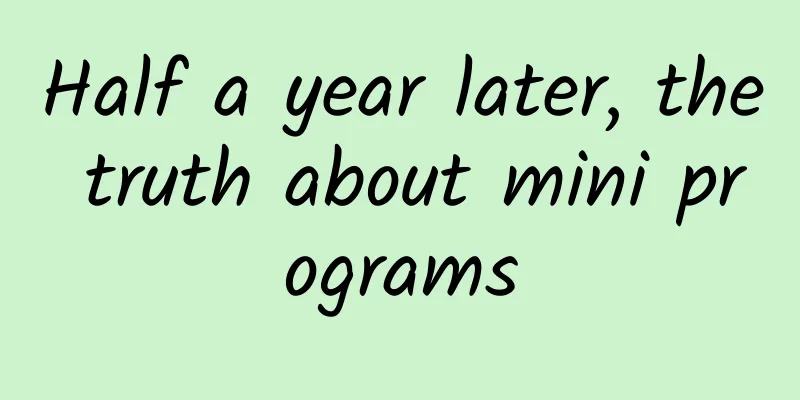Not necessarily causal, the operator is just a rational executor

|
When I was browsing PMCAFF Q&A, I saw a question: "In the early stages of a product, should we screen members to maintain the product tone, or should we grab traffic first and attract many users to join?" This is a question about the matching of product stage and operation strategy. Let me first talk about the information reflected in the question: First, this may be a high-quality social or content product. Second, “grabbing traffic” shows the urgency of data growth. Third, when traffic pours in, there are not enough measures to ensure the quality of users or content, and it may currently rely mainly on manual review. Let’s talk about the response to this question: Unless you encounter a traffic dividend, there is nothing to grab, the pure traffic cost is there. Introducing a large number of users and maintaining the tonality do not conflict in themselves . What conflicts is the lack of operational preparation, the lack of a complete incentive system, operational automation, and the lack of a response mechanism to the impact of a large number of different users on the product tonality. Viewed from another perspective, for products that are defined as having a certain tone, there is a certain contradiction in nature between precise users and large-scale traffic. Companies like MONO and Huxiu will obviously not introduce large-scale traffic to acquire users. Operation time Many products are facing overlapping users and direct competition. It is no longer possible to easily achieve development goals by simply taking the product + promotion route. As products become more and more segmented, they are no longer suitable for full-scale promotion. Instead, the question is how to lock in precise users. In addition, the cost of pure traffic is high, and the choice of operating methods is becoming more comprehensive. What should be done at what stage and what should be the focus of operations? These are things that make people think seriously, especially when encountering bottlenecks. This is a measure of operational cost-effectiveness and objectives. For example, when the product is huge in scale, the cost of new users can be controlled through simple SEM and application market launch, but it will be a drop in the bucket for growth. On the contrary, if in the early stage of the product, the investment can lead to a large increase in users, but the retention and activity cannot be maintained, the loss will outweigh the gain. Operational decisions are also complex. Product not launched The starting point is that there is no product, and we can only rely on third-party tools to explore the common needs of users based on product attributes and gather them together with less investment in manpower and financial resources. The core purpose of this stage is to build momentum for product growth. Intuitively speaking, many products accumulate users at this stage, which allows downloads and usage to increase in a short period of time within a few days of product release, thereby gaining attention and recommendations from the app market. With a base of users, you can perform marketing operations from the inside out at low cost. Different types of products have different implementation plans: 1. Build a human or simplified version of a feasible product, develop the formal product while conducting precise small-scale promotion. For example, personal assistant products such as "Get, Assistant Comes" can be connected by humans in the early stage, and then promoted as a product concept and gradually functionalized. 2. Derive similar activities and topics based on the products to gather target users. It would be better if it is branded, serialized or socialized , such as sports and fitness, and hobby products. 3. Attract target users through content and distribution. The cycle is generally 1-3 months, and the data targets are not high, a few hundred, a few thousand, or even tens of thousands of quantities are fine. Accuracy, activity, and loyalty are more important, so the execution cost of these plans is not high. During this period, if there is no product on the ground, it is ineffective to do purely scattered exposure and product promotion, including entrepreneurial reports, which are just self-entertainment within the circle. There must be a gathering place, otherwise it will not be able to echo the product. Product Startup The operation strategy is suitable for the status of the product. At this time, the product may have problems and solutions: 1. Various minor bugs and experience issues are normal and not a big deal. 2. Failure to meet user expectations. The user usage and feedback you imagined for the product are inconsistent. If it is just the first complaint, the problem is not serious. If the churn rate and active ratio are too low, you need to re-examine it, otherwise no amount of promotion will be effective. 3. The product’s service coverage is not enough. For example, for C2C service products, the number of service terminals must be greatly expanded. 4. Product atmosphere and user habits have not been formed. For example, there is little UGC and spontaneous interaction. In this case, human maintenance and marketing methods should be used to promote it first to reduce the loss rate of new users due to lack of atmosphere. The measurement goal at this stage is to achieve expected user habits in using the product through operational promotion and product improvement, with stable active data and good reputation, thereby removing internal obstacles for large-scale promotion. Some products do not have this problem at this stage, such as Keep , which can directly increase the volume if there are sufficient numbers and types of video courses. Leverage low-cost external channels, including application market operations and free reporting. Product Growth The activity of the product is stable and can be operated on a large scale. Pay attention to the following aspects: 1. Continuous and stable traffic introduction, including ranking in the app market, event cooperation, performance advertising , product resource replacement, etc.; 2. Promote activities, initiate various interactive, rights-based, competition, promotional activities, etc., and improve active data in stages; 3. Membership system operation. The membership system should be considered in the product design stage, but its effect is not obvious in the early stages of operation. The user's growth path and points value are fixed by design. The specific operation is to increase the scenarios for members to earn and use points, and continuously enrich the value of member rights. For example, "Tao Piaopiao" combines membership benefits with its own coupons, Youku membership, and Xiami membership to enhance membership value. 4. Self-growth of traffic and users, planning of SEO optimization and growth data on the PC side, and operation of sharing invitation mechanism; 5. Data operation is somewhat similar to growth hacking. At this stage, the data has accumulated to a certain extent and can be used to analyze business as well as product problems. Product maturity The most common feelings at this stage are lack of growth, the need to maintain activity and monetization, and it is also a common bottleneck period. From the perspective of traffic, the product's growth target is already a drop in the bucket, or the gap with competing products cannot be shortened. At this time, the demand for branding has become very strong, including the brand in the minds of users and the brands within the industry. From the execution perspective, there are several aspects: 1. All execution during the product growth period, especially planned activation and deeper data optimization; 2. Find differentiated new business modules; 3. Continue to invest in marketing cooperation and focus on marketing goals, rather than just reporting on traffic; 4. Actively seek cooperation with other industries. Be a rational executor Listed above are some execution methods for various products at different stages. As an operator, in addition to understanding the logic of the tasks being performed, you must also constantly think about the overall situation, what is suitable to do at this stage, and build judgment experience to break through the limitations of your thinking. There is no operational measure that must be taken (there are always various individual cases) because there is no absolute causal relationship with product success. In most cases, when the time is right and within the controllable resources, just do what you can think of. Mobile application product promotion service: APP promotion service Qinggua Media advertising This article was compiled and published by @毒师 (Qinggua Media). Please indicate the author information and source when reprinting! |
>>: What can Baidu Mini Programs do? What can mini programs do?
Recommend
100 event planning tools, how many do you know?
When you first start planning, your leader assign...
Promotion and Marketing: What to do if traffic is high but conversion rate is low?
What if you have lots of visitors but not a lot o...
Why do train attendants take away sleeper tickets? It turns out that...
Have you ever had such an experience? After getti...
It's here again! Why are there so many supermoons? What are the highlights?
The biggest supermoon of the year is here! Is the...
Want to lose weight by eating dark chocolate? Wake up!
Audit expert: Wang Guoyi Postdoctoral fellow in N...
Will smart speakers become a new entry point for smart homes? It is still difficult to copy the mobile phone model
Technological progress has greatly changed people...
14 tips to improve the conversion rate of advertising landing pages!
This article is a summary of the book "The B...
How to choose the most effective promotion channel for APP?
After the APP is launched, promoting the product ...
In the future, what kind of product manager will be irreplaceable?
Taobao Product Platform Department Senior Expert ...
How much does it cost to customize the Panzhihua Education Mini Program? What is the price quote for customizing Panzhihua Education Mini Program?
There is no doubt that the topic of mini programs...
How to promote user growth by optimizing data!
With the development of the Internet, traffic has...
Amazing! This bird's beak changes color during the breeding season
The arrival of spring is always accompanied by th...
In addition to screenshots and descriptions, preview videos are also an important factor in increasing App Store download conversions.
In order to further optimize the user experience ...
To stand out in the flood of information, you need to add four kinds of ingredients to your content
Content operators hope that the content they prod...









